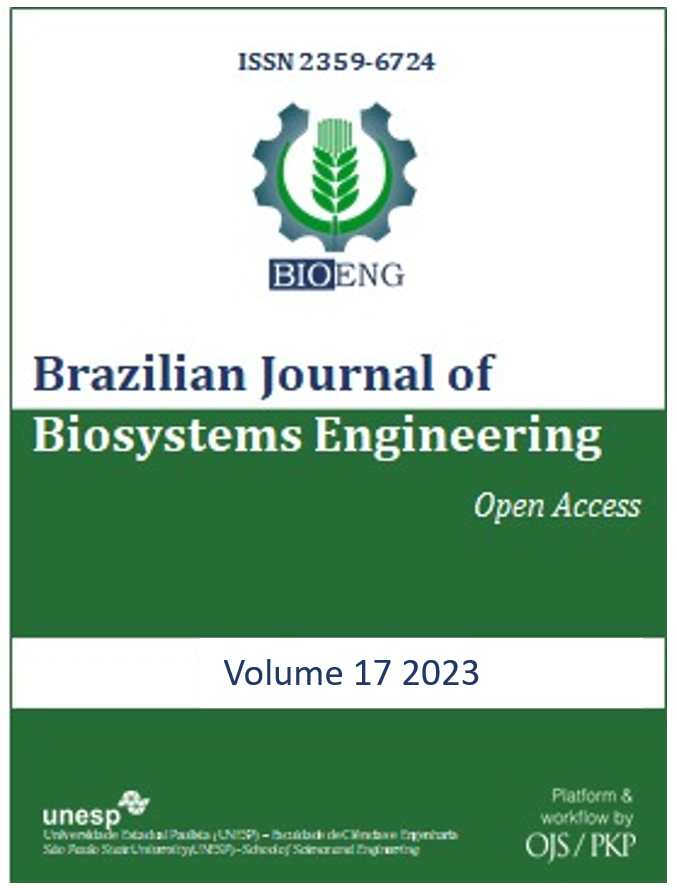Control and management of water quality for Nile tilapia fish in net tanks based on fuzzy modeling
DOI:
https://doi.org/10.18011/bioeng.2023.v17.1197Keywords:
Mathematical Models, Decision Making, Measure, Design, MatLabAbstract
Being classified as one of the most important species for fish farming, the Nile tilapia has seen a huge increase in breeding worldwide. As in any cultural medium, dealing with the quality of the medium in which it is grown guarantees a large part of the success of the process, being of equal importance, in this case, the quality of the water. Taking advantage of existing mathematical models, humans were able to measure and design best practices in virtually all areas, pointing to its great functionality, this article used the Fuzzy logic mathematical model together with Mamdani inference to analyze water quality scenarios and their consequences, various environments, variables, capable of directly affecting fish farming. The purpose was to use the MatLab scientific software to cross these variables with the possible output scenarios, facilitating the producer's decision-making. As a result of the research, it was possible to develop an algorithm to be embedded in a mobile application in the future with fuzzy mathematical modeling, with a Mamdani inference system for management and control of water quality in Nile Tilapia fish farming. The same will be made available to these breeders, since it has a structure of rules, aiming at the delivery of scientific information that collaborates with the best cultivation practices, improving production and profitability, through decision support to fish farmers.
Downloads
References
Bassanezi, R. C. & Ferreira Jr., W. C. (1988). Equações Diferenciais com aplicações, Editora HarbraLtda., São Paulo.
Bertalanffy, L. (1973). Teoria Geral dos Sistemas, Editora Vozes, Petrópolis.
Carvalho, E.D. (2006). Avaliação dos impactos da piscicultura em tanques-rede nas represas dos grandes tributários do alto Paraná (Tietê e Paranapanema): o pescado, a ictiofauna agregada e as condições limnologias. Relatório Científico (FAPESP). Botucatu, SP. 46p.
Castagnolli, N. (1992). Criação de peixes de água doce. Jaboticabal: FUNEP. 189p.
Codevasf. (2019). Manual de Criação de Peixes em Tanques-Rede. Ministério do Desenvolvimento Regional. 3º ed. Brasília – DF.
Coleção Senar 208. (2018). Piscicultura: Criação de Tilápias em Tanques-Rede. Serviço Nacional de Aprendizagem Rural. Brasília – DF.
Cyrino, J.E. & Conte, L. (2006). Tilapicultura em Gaiolas: produção e economia. In: José Eurico Possebon Cyrino e Elisabeth Criscuolo Urbinati (Eds.). AquaCiência: Tópicos Especiais em Biologia Aquática e Aqüicultura. Jaboticabal: Sociedade Brasileira de Aqüicultura e Biologia Aquática, cap.12, p.151-171.
Emater-DF. (2009). Criação de Tilápias. Governo do Distrito Federal. 2º ed. Brasília – DF.
Hughes, S.G. (1993). All-vegetable protein feeds. Feed International, v.14, p.55-60.
Lee, C.C (1990). Fuzzy Logic in Control Systems: Fuzzy Logic Controller, parts I and II. IEEE Trans. on Systems, Man, and Cybernetics, vol. 20, pp 404-435. DOI: https://doi.org/10.1109/21.52552
Mastelini, V., & Mollo Neto, M. (2022). INDICADORES DE QUALIDADE DA ÁGUA PARA CRIAÇÃO DE TILÁPIAS-DO-NILO EM TANQUE-REDE: UMA REVISÃO DAS PRÁTICAS DE ANÁLISES DE CRIAÇÃO (2010 – 2021). RECIMA21 - Revista Científica Multidisciplinar - ISSN 2675-6218, 3(12), e3122363. https://doi.org/10.47820/recima21.v3i12.2363 DOI: https://doi.org/10.47820/recima21.v3i12.2363
Ono, E. A. & Kubitza, F. (2003). Cultivo de peixes em tanques-rede. 3ªed. Jundiaí: Eduardo A. Ono, 112p.
Schmittou, H.R. (2003). Produção de peixes em alta densidade em tanques-rede de pequeno volume. Tradução de Eduardo Ono. ASA - Associação Americana de Soja. Editado por Silvio Romero Coelho, Mogiana Alimentos S.A., 1995, 78p.ONO, E. A.; KUBITZA, F. Cultivo de peixes em tanques-rede. 3ªed. Jundiaí: Eduardo A. Ono, 112p.
Sodré, U. (2007). Modelos Matemáticos. UEL, Londrina/PR.
Souza, O. N. (2010). Introdução à Teoria dos Conjuntos Fuzzy. Universidade Estadual de Londrina - Centro de Ciências Exatas - Departamento de Matemática, Londrina/PR.
Zadeh, L. (1988) - Fuzzy Logic - IEEE Computer, April, pp. 83-92. DOI: https://doi.org/10.1109/2.53
Zimmermann, S. & Fitzsimmons, K. (2004). Tilapicultura intensive. In: José Eurico Posseibon Cyrino, Elisabeth Criscuolo Urbinati, Débora Machado Fracalosi, Newton Castagnolli (Editores), Tópicos especiais em piscicultura de água doce tropical intensiva, São Paulo: TecArt, Cap.9, p. 239-266.
Downloads
Published
How to Cite
Issue
Section
License
Copyright (c) 2023 Revista Brasileira de Engenharia de Biossistemas

This work is licensed under a Creative Commons Attribution 4.0 International License.
Authors who publish in this journal agree to the following terms:
a) Authors retain the copyright and grant the journal the right of first publication, with the work simultaneously licensed under the Creative Commons Attribution License that allows the sharing of the work with recognition of authorship and initial publication in this journal.
b) Authors are authorized to assume additional contracts separately, for non-exclusive distribution of the version of the work published in this journal (eg, publish in an institutional repository or as a book chapter), with recognition of authorship and initial publication in this journal.








